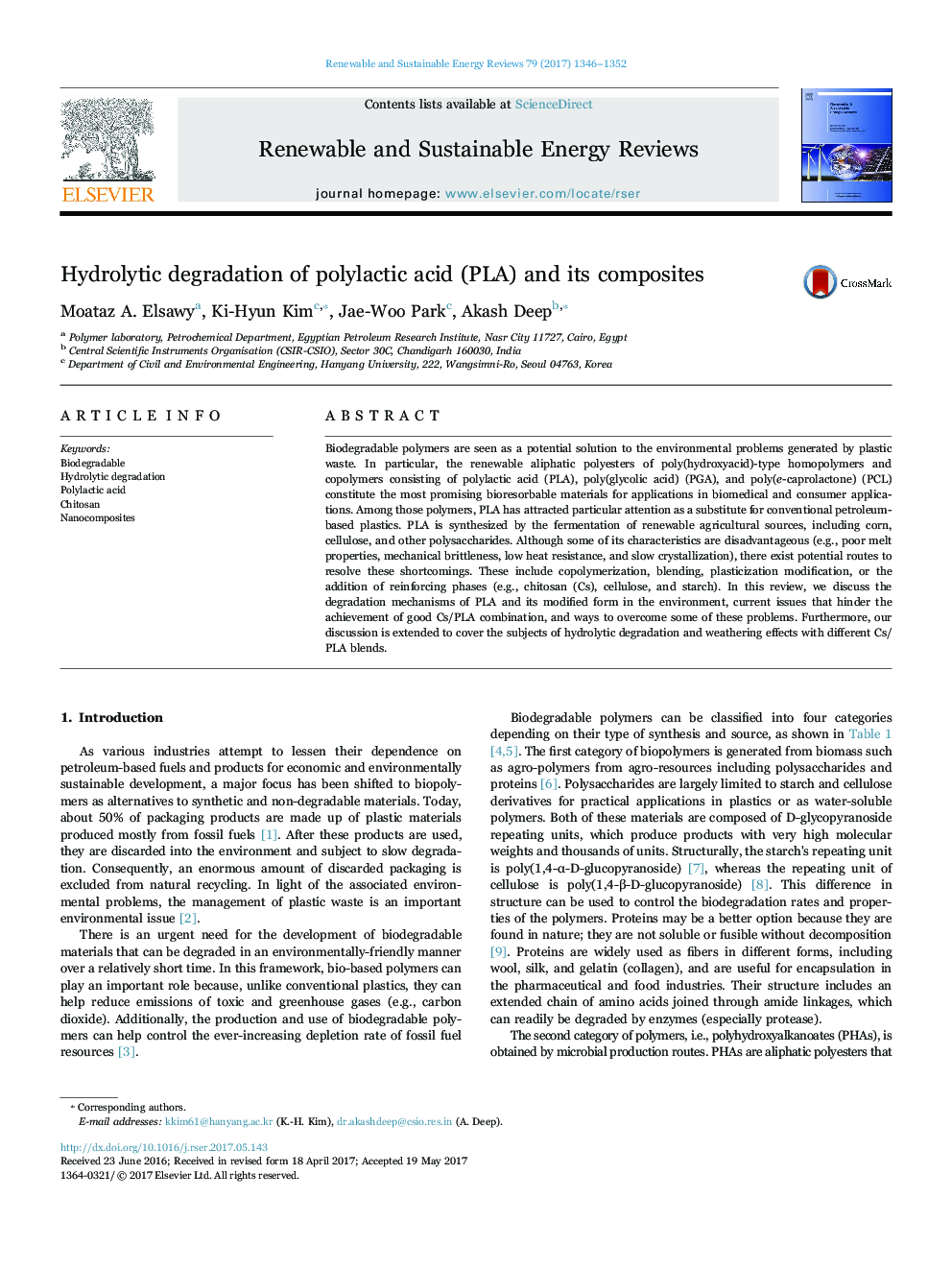| Article ID | Journal | Published Year | Pages | File Type |
|---|---|---|---|---|
| 5482642 | Renewable and Sustainable Energy Reviews | 2017 | 7 Pages |
Abstract
Biodegradable polymers are seen as a potential solution to the environmental problems generated by plastic waste. In particular, the renewable aliphatic polyesters of poly(hydroxyacid)-type homopolymers and copolymers consisting of polylactic acid (PLA), poly(glycolic acid) (PGA), and poly(e-caprolactone) (PCL) constitute the most promising bioresorbable materials for applications in biomedical and consumer applications. Among those polymers, PLA has attracted particular attention as a substitute for conventional petroleum-based plastics. PLA is synthesized by the fermentation of renewable agricultural sources, including corn, cellulose, and other polysaccharides. Although some of its characteristics are disadvantageous (e.g., poor melt properties, mechanical brittleness, low heat resistance, and slow crystallization), there exist potential routes to resolve these shortcomings. These include copolymerization, blending, plasticization modification, or the addition of reinforcing phases (e.g., chitosan (Cs), cellulose, and starch). In this review, we discuss the degradation mechanisms of PLA and its modified form in the environment, current issues that hinder the achievement of good Cs/PLA combination, and ways to overcome some of these problems. Furthermore, our discussion is extended to cover the subjects of hydrolytic degradation and weathering effects with different Cs/PLA blends.
Related Topics
Physical Sciences and Engineering
Energy
Renewable Energy, Sustainability and the Environment
Authors
Moataz A. Elsawy, Ki-Hyun Kim, Jae-Woo Park, Akash Deep,
